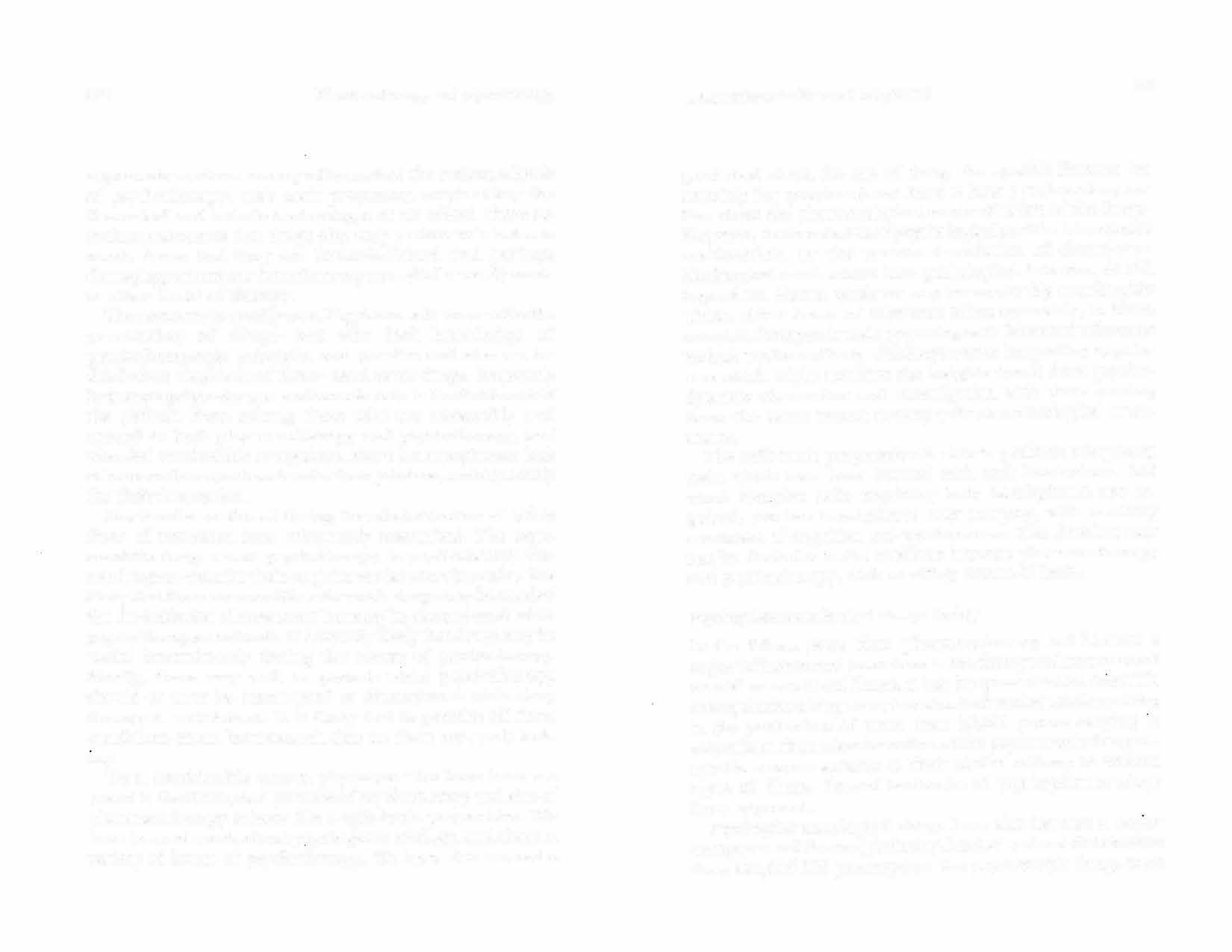
2 minute read
RESEARCH DESIGN FOR COMBINED PHARMACO THERAPY AND PSYCHOTHERAPY TRIALS .... ·. · · ·
272
Pharmacotherapy and psychotherapy
Advertisement
arguments continue among adherents of the various schools of psychotherapy, with each proponent emphasizing the theoretical and techr:ical ad vantages of his school, there remains a consensus that drugs play only a minor role in treatment. Some feel they are contraindicated and perhaps damaging; others usc them for symptom relief or as adjuvants to other forms of therapy. The converse is equally true. Physicians with licenses for the prescribing of drugs-but who lack knowledge of psychotherapeutic principles and practice and who arc indeed often suspicious of them-tend to use drugs, frequently in inappropriate dosages and occasionally to the detriment of the patient. Even among those who are reasonably well trained in both pharmacotherapy and psychotherapy, and who feel comfortable using them, there is a conspicuous lack of reasoned comprehension for their joint use, and especially for their interaction. Nor has the matter of timing the administration or either form of treatment been adequately researched. The argument for drugs versus psychotherapy or psychotherapy versus drugs or even for their conjoint use is somewhat na·ive. lt is likely that there are conditions in which drugs may be needed for the initiation of treatment but may be discontinued while psychotherapy continues. It is equally likely that drugs may be useful intermittently during the course of psychotherapy. Finally, there may well be periods when psychotherapy should or must be interrupted or discontinued while drug therapy is maintained. It is likely that in practice all these conditions occur, but research data on them are sorely lacking. To a considerable extent, physicians who have been exposed to the theory and practice of psychotherapy and also of pharmacotherapy behave like a split-brain preparation. \Ve have learned much about psychogenic etiology, and about a variety of forms of psychotherapy. We have also learned a
Introcluctlon: Problems of integration 273
good deal about the use of drugs for specific _
illnesses (or certainly for symptoms) and have at least a rudimentary notion about the pharmacological mode of action of the drugs. However, the translation of psychological conflict into cellular malfunction, or the reverse translation of disordered biochemical mechanisms into pathological behavior, is still beyond us. Hence, while ·we may be reasonably com _
fortable within either frame of reference taken separately, m those complex therapeutic tasks requiring both frames of reference we lack a coherent body of theory or even integrating hypotheses which might combine the insights drawn from psyc�odynamic observation and investigation with thos _
e cornrng from the more recent neuropsychopharmacolog1cal treatments. The split-brain preparation is able to perform adequately tasks which have been learned with each hemisphere. But when complex tasks requiring both hemispheres are required, the two hemispheres may compete, with resulting confusion of cognition and performance. The situation may not be dissimilar in the relations between pharmacotherapy and psychotherapy, with resulting misuse of both.
Psychopharmacological drugs today In the fifteen years since pharrnacotherapy has become a major influence and procedure in the theory a1:d treatmen� <�f mental or emotional illness, it has burgeoned rnto a scientific enterprise involving many hundreds of workers and resulting _in the publication of more than 10,000 papers �angmg 111 scope from the molecular action of the psychotrop•� drug� on specific enzyme systems to their clinical efficacy m vanous types of illness. Several textbooks of psychopharmacology have appeared. Psychopharmacological drugs have also become a maJor component of the drug industry. Levine1 estimated that more than 178,000,000 prescriptions for psychotropic drugs were



